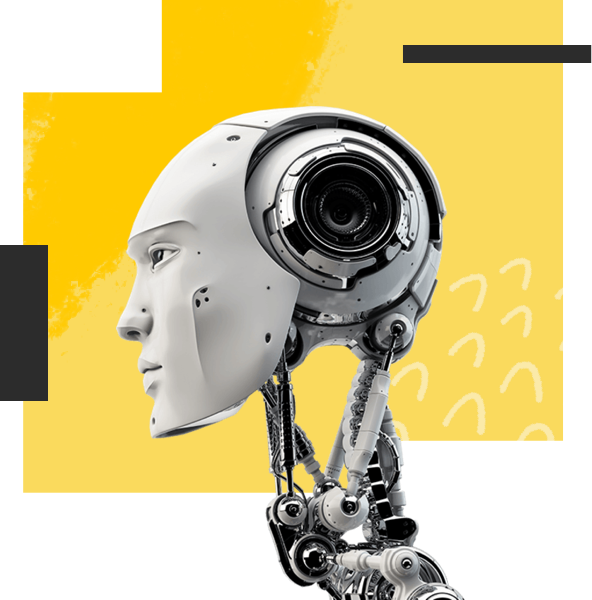
Want more than a theory?
Get the most out of automation trends.

Digital transformation is out there, it’s concrete and no longer easily ignored. Everyone’s talking about it and making predictions of what steps businesses should take to mitigate the risks of lagging behind the competition, and most importantly, how not to perish while being hit with major disruption forces like COVID-19.
Most predictions shape our opinion and push us towards making the right decisions, we as people who help businesses run are compelled to evaluate.
Prior to making any predictions or decisions, we should adhere to the fact that failing to see and recognize the benefits of digital transformation and adopting them can result in terrible outcomes. The consequences of just that have been clearly presented and seen this year and are truly disturbing. The mistake of failing to act on digital trends hit the world economy hard. Just as an example 40 million unemployment claims were filed in the US due to the pandemic.
Hold it, back up! But how could knowing about trends in technology and digital transformation have helped?
As noted in Gartner technology trends 2021, organizations have spent years focusing on efficiency, which led to making business processes brittle, failing to adapt, and breaking under the force of external factors like the Pandemic. On the other hand, the quick adoption of technology trends like cloud mitigation allowed industry players to survive and reconsider business priorities.
Another survey by McKinsey clearly indicates the perception shift of business executives from ranking cost savings as one of the most important priorities back in 2017 to investing in technology for competitive advantage or even refocusing their entire business around digital technologies in 2020.
Today’s online landscape sets a high bar for any organization that has the intention of remaining competitive, leaving no other option but to adapt to rapidly evolving changes to digital markets. Here are just a few of the digital transformation trends expected to dominate 2021.
1. The Cloud and automation
Cloud is big, there’s no doubt about that. Some major investments in cloud computing and infrastructure were made by providers like IBM, Azure, Google, and Oracle, highlighting the need to expedite the adoption and enablement of simpler connectivity for cloud infrastructure. But just like any other infrastructure, it needs to be supported and maintained in order to benefit the enterprise.

The biggest digital trend of 2021 could easily be the implementation of sustainable cloud infrastructure vs. the adoption of cloud infrastructure. Organizations that implement sustainable cloud infrastructure with automation see enhanced benefits like saved resources.
A court in the German city of Munster has ruled that bread and hot drinks should be complemented by cold cuts, cheese, or spreads in order to constitute a complete breakfast. Just like that while scaling or adopting Cloud infrastructure, businesses should consider empowering it with an automation solution in order to make it agile and to boost productivity while dropping manual routine tasks, thus allowing employees to focus on high-value business goals.
According to Flexera 2020 Cloud Computing Trends Report, enterprises continue to implement multi-cloud and hybrid cloud strategies while in some cases using more than two public and two private clouds on average. Based on growing demand and the fact that Cloud remains an essential pillar of digital transformation, we’re likely to observe an increase in cloud budget spend by almost 50%. As a result, apart from workflow migration, the optimization of existing cloud use remains at the top of enterprise priorities for 2021.
2. AI and Machine Learning (ML)
Some of the previous digital marketing trends suggested investing in data analytics. As great advice as that is, many articles and popular resources failed to mention the need for AI and ML for processing complex data sets to make the collected data meaningful.
Based on the tendency for enterprises to follow major changes in digital transformation, it’s not too hard to see that Artificial Intelligence is going to be incorporated by nearly every industry.
Over the last few years, AI has proven itself to be extremely adaptable to almost any given sector or enterprise and even in our everyday lives. Applied AI, machines built for dealing with specific (narrow) tasks, can be found everywhere from in your home like Alexa to robot vacuum cleaners. On the other hand, while General AI still remains a realm for science fiction, we’re rapidly moving towards developing more sophisticated Deep Learning algorithms which are considered to be the most powerful forms of AI involved in the creation of neural networks.

Following the previous business trend of ChatBot implementation and the rise of conversational AI technology that allows for the recognition of speech patterns and successful mimicking of human conversations, the implementation of AI technology has already played a crucial role in fighting COVID-19. It’s helping various organizations answer millions of questions concerning the pandemic, especially the first wave hit.
Taking into account that the “work from home” trend is not going to vanish anytime soon, we’re likely to see the adoption of AI technology related to boosting workplace automation in more than a third of companies by the end of 2021 as suggested by Forrester. Furthermore, the global impact of COVID-19 had next to no influence on overall investments in AI with 47% remaining unchanged, and 30% of enterprises increasing their investments in technology, according to Gartner.
Intelligent automation powered by pragmatic AI and low-code development is going to become the next driver of business efficiency and the expansion of operations moving the regular agenda toward back-office optimization.
3. Low code/no code revolution & citizen developers
Covid-19 has forced the industry to accelerate the adoption of digital transformation leaving no other option but to be agile in supporting business infrastructure. Allocating human resources can be a challenging thing in ever-changing and unpredictable environments, but one thing is for sure, the rise of citizen developers is something that we’re going to continue to see in the upcoming years.

Summarizing some predictions from Forrester, Microsoft, and Gartner, the forecast might look like this:
In the next 5 years, the amount of applications that are going to be built with low code tools is going to reach 450 million with 21.2 billion dollars spent by companies by the end of 2022 on low code development platforms. There is an assumption that by the end of 2023, the number of active citizen developers at high-end enterprises might surpass the number of professional developers by four times.
This business trend is becoming a rising necessity as a survey by Gartner covering IT-related business indicates the following: 46% of respondents stated that the increase in business-led IT spend was due to increased development of software, applications, or databases. Another survey indicates that 41% of respondents confirmed they’re active in citizen development initiatives, and the 20% that aren’t engaged in citizen development or low-code initiatives are planning to start.
No code allows those who implement it to establish an automation layer that greatly reduces the time it takes to develop a platform. Using bots and AI for validating software code and the automation of manual processes frees up valuable human resources and cultivates the digital dexterity of an enterprise.
What this trend speaks to is the lack of IT specialists and the empowerment of individual workers in order to deploy and configure business automation processes. This is more about decreasing the cost of automation and the ability to make this available to almost anyone. Every time people have been moving to higher abstraction languages (like PHP), that decreased the barrier for entry for new people to actually create new automation software and allow the pool of people to actually take advantage of that to grow.
The no-code movement will increase the pool of people that are going to be IT-workers, that are going to be able to implement solutions on top of existing applications.
The key principle of the “how to stay afloat” recipe is allowing enterprises to remain competitive by ensuring top-ranking executives separate wheat from chaff, understand and implement digital transformation techniques along with low code/no code, AI/ML, and Cloud automation solutions to drive actionable business results and insights.
Consumers are rapidly moving towards online channels and proving the need for expanded digitalization and it as a necessity for any business that has the intention to thrive in a digitalized landscape. Taking into account external forces like the COVID-19 pandemic, the expedited rate of adopting digital trends is years ahead of what was observed prior. SMBs and enterprises are responding in turn, trying to reinvent processes by adopting and embedding digital transformation trends and technologies in the core of their businesses’ infrastructures.
From what we currently seeing, digital trends are transitioning from being perceived as drivers for competitive advantage and market dominance to playing a crucial role in stabilizing the world economy.
The very important point is how to transform business processes in a way that is coherent across the organization. Businesses today have completely disjointed solutions for each one of the processes which don’t work well with each other. When choosing the solution for their needs they have to think about how this solution fits into the overall business structure and whether it can remain relevant as your business grows., says Borya Shakhnovich.
airSlate democratizes business automation. Our products have become an integral part of business continuity during covid-19, and our focus on delivering these goods and services to everybody is what made us so successful during 2020.

Want more than a theory?
Get the most out of automation trends.